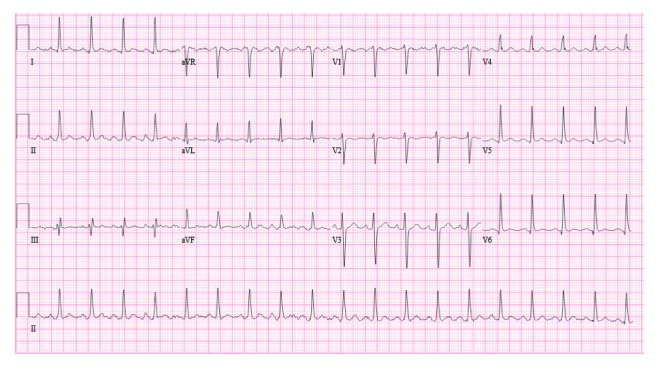Clozapine-induced cardiotoxicity in 21-year-old patient that initially presented as sepsis.
This article describes the case of a 21-year-old African American male patient who developed clozapine-induced cardiotoxicity. The patient presented with fever and tachycardia. He had a history of schizophrenia. Doctors transferred him from the psychiatric unit to the medical floor to rule out sepsis.
The patient did not respond well to his home medication and decompensated which resulted in poor functioning, therefore, he had to be hospitalized frequently. All his initial lab tests including urine toxicology were all within normal range. Ever since his diagnosis of schizophrenia, doctors had put him on multiple antipsychotics including haloperidol, olanzapine, and risperidone. However, because of a possible failure of the previous medications, his doctor prescribed clozapine 25 mg PO twice daily which over the next 12 days was titrated up up to 150 mg PO twice daily. He was at 300 mg when he suddenly developed fever and tachycardia and had to be transferred from the psychiatric inpatient floor.
Examination and diagnosis
The patient was mostly seelctively mute on the medical inpatient unit and did not seem to be in any kind of pain. He did not show any other symptoms including vomiting, diarrhoea, seizures or loss or consciousness either. In addition, physical examination also did not show any significant findings. Cardiac auscultation was also largely normal except for a tachycardic heart rate. In addition, the apex beat was at the midclavicular line in the 5th intercostal space. S1 and S2 sounds were normal, no evident gallop rhythm, murmurs or rubs. His peripheral extremities were also warm with normal capillary refill. Treatment included administration of normal saline and intravenous antibiotics (vancomycin and meropenem). Investigations showed an elevated eosinophils count and erythrocyte sedimentation rate (ESR).
The patient’s symptoms and investigation findings led to the diagnosis of clozapine-induced cardiotoxicity. The medication was discontinued after which the patient’s symptoms resolved. The psychiatric team replaced clozapine with aripiprazole. The patient tolerated it well, without any side effects.
References
Clozapine-Induced Cardiotoxicity Presenting as Sepsis: A Case Report and Literature Review https://www.ncbi.nlm.nih.gov/pmc/articles/PMC6462315/




